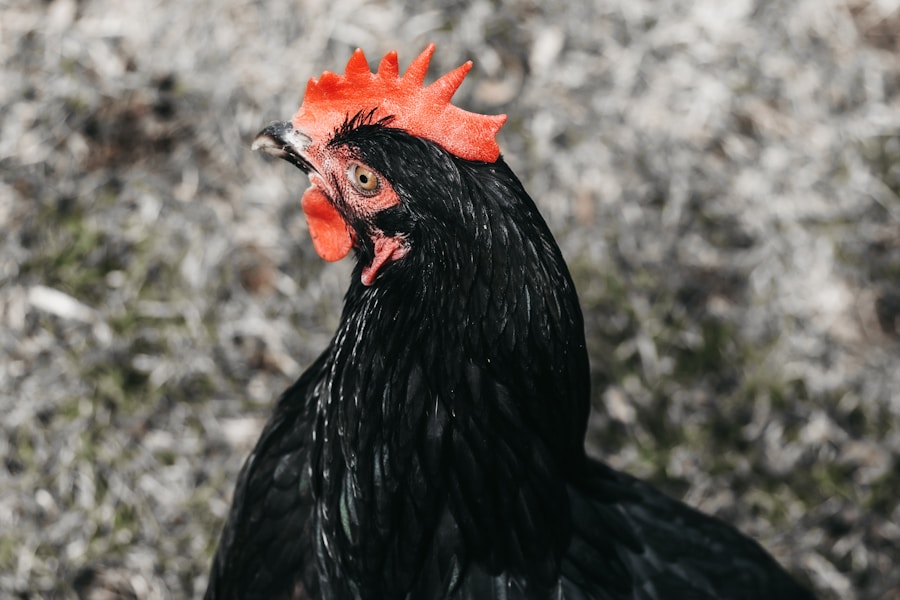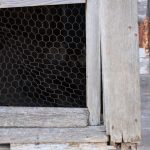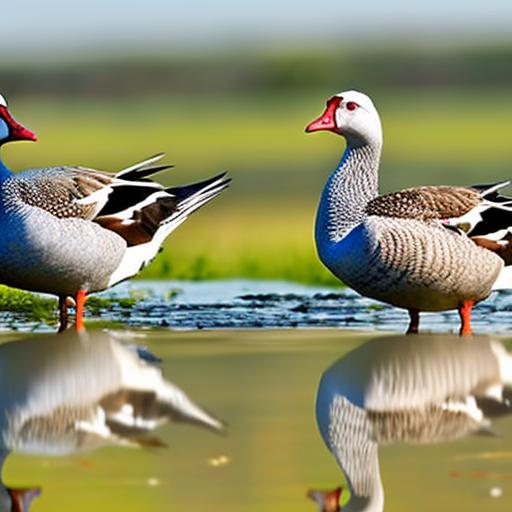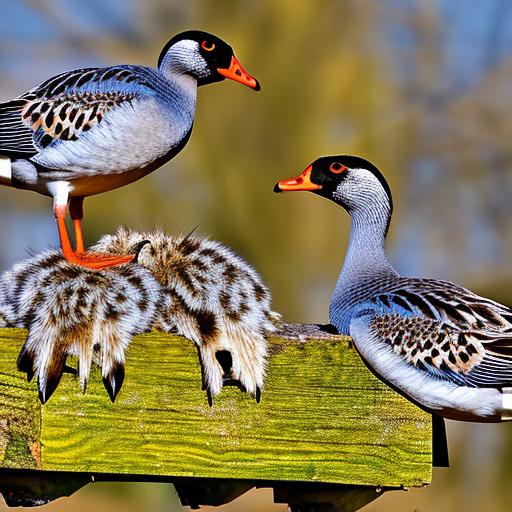When it comes to raising chickens, one of the biggest challenges is protecting them from predators. Common predators that pose a threat to chickens include foxes, raccoons, coyotes, hawks, owls, and even domestic dogs and cats. These predators are attracted to chickens because of their small size and vulnerability. Foxes are known for their cunning and ability to dig under fences, while raccoons are notorious for their dexterity and ability to open latches and doors. Hawks and owls are aerial predators that can swoop down and snatch chickens with ease. Understanding the behavior and habits of these predators is crucial in developing effective strategies to protect your flock.
In addition to the more obvious predators, it’s important to be aware of less common threats such as weasels, minks, and even snakes. Weasels and minks are skilled hunters that can slip through small openings and wreak havoc on a chicken coop. Snakes, on the other hand, can pose a threat to both eggs and chicks. By understanding the behavior and habits of these predators, you can take proactive measures to safeguard your chickens and minimize the risk of predation.
Table of Contents
Securing the Coop and Run
Securing the coop and run is the first line of defense against predators. This involves using sturdy materials such as hardware cloth or welded wire to construct the coop and run. It’s important to bury the wire at least 12 inches deep to prevent predators from digging underneath. Additionally, make sure that all doors and windows are securely latched and that there are no gaps or openings that predators can exploit. Consider installing motion-activated lights or alarms to deter nocturnal predators such as raccoons and foxes.
Another important aspect of securing the coop and run is keeping the surrounding area clear of debris and overgrown vegetation. This not only eliminates potential hiding spots for predators but also makes it easier for you to monitor the area for signs of intrusion. Regularly inspect the coop and run for any signs of wear and tear, and make necessary repairs promptly to maintain its integrity.
Implementing Predator Deterrents
In addition to securing the coop and run, implementing predator deterrents can further reduce the risk of predation. One effective deterrent is the use of predator-proof fencing around the perimeter of the property. This can help keep larger predators such as coyotes and dogs at bay. Another deterrent is the use of scare tactics such as predator decoys, noise makers, or even predator urine. These tactics can create a sense of danger for potential predators and discourage them from approaching the coop and run.
Consider planting thorny bushes or installing prickly plants around the perimeter of the property to create a natural barrier against predators. This not only serves as a physical deterrent but also provides additional cover for your chickens. Additionally, consider using natural repellents such as garlic or hot pepper spray around the coop and run to deter predators. These methods can be effective in deterring predators without causing harm to your chickens or the environment.
Using Livestock Guardian Animals
Livestock guardian animals such as dogs, llamas, or donkeys can be valuable allies in protecting your chickens from predators. These animals are bred and trained to protect livestock from potential threats. Dogs, in particular, are known for their loyalty and protective instincts, making them excellent guardians for chickens. Llamas and donkeys are also effective at deterring predators due to their size and territorial nature.
When selecting a livestock guardian animal, it’s important to choose one that is compatible with your chickens and has been properly trained to coexist with them. Introduce the guardian animal to the flock gradually and monitor their interactions closely to ensure that they get along. Provide the guardian animal with adequate shelter, food, and water, and make sure they receive regular veterinary care to maintain their health and well-being.
Practicing Good Husbandry
Practicing good husbandry is essential in maintaining a healthy and secure environment for your chickens. This includes providing them with a clean and well-maintained coop and run, as well as access to fresh water and nutritious feed. Regularly clean the coop and run to remove any waste or debris that may attract predators. Keep feed in secure containers to prevent attracting rodents or other potential predators.
In addition to maintaining a clean environment, it’s important to provide your chickens with adequate space to roam and exercise. This not only promotes their physical health but also reduces stress and aggression within the flock. Consider providing enrichment activities such as perches, dust baths, or toys to keep your chickens mentally stimulated and content.
Monitoring and Observing Behavior
Monitoring and observing your chickens’ behavior is crucial in identifying potential threats and addressing them promptly. Keep an eye out for any signs of distress or agitation within the flock, as this may indicate the presence of a predator nearby. Look for any unusual behavior or injuries that may be indicative of a predator attack.
Regularly inspect the perimeter of the property for signs of intrusion such as tracks, droppings, or damage to fencing. This can help you identify potential weak points in your defenses and take proactive measures to reinforce them. Consider installing security cameras or motion-activated sensors around the coop and run to monitor activity during both day and night.
Seeking Professional Help
If despite your best efforts, you continue to experience predation issues, it may be time to seek professional help. Consult with a local wildlife expert or predator control specialist who can provide guidance on effective predator management strategies. They can help you identify specific threats in your area and develop a customized plan to protect your chickens from predation.
In some cases, it may be necessary to implement more advanced predator control measures such as trapping or relocation. It’s important to work with professionals who have experience in handling wildlife ethically and legally. They can provide valuable insight into local regulations and best practices for managing predator populations while minimizing harm to both wildlife and your chickens.
In conclusion, protecting your chickens from predators requires a multi-faceted approach that involves understanding common predators, securing the coop and run, implementing deterrents, using livestock guardian animals, practicing good husbandry, monitoring behavior, and seeking professional help when needed. By taking proactive measures to safeguard your flock, you can create a safe and secure environment for your chickens to thrive. Remember that predator management is an ongoing process that requires vigilance and adaptability to effectively protect your chickens from potential threats.
Meet Walter, the feathered-friend fanatic of Florida! Nestled in the sunshine state, Walter struts through life with his feathered companions, clucking his way to happiness. With a coop that’s fancier than a five-star hotel, he’s the Don Juan of the chicken world. When he’s not teaching his hens to do the cha-cha, you’ll find him in a heated debate with his prized rooster, Sir Clucks-a-Lot. Walter’s poultry passion is no yolk; he’s the sunny-side-up guy you never knew you needed in your flock of friends!







